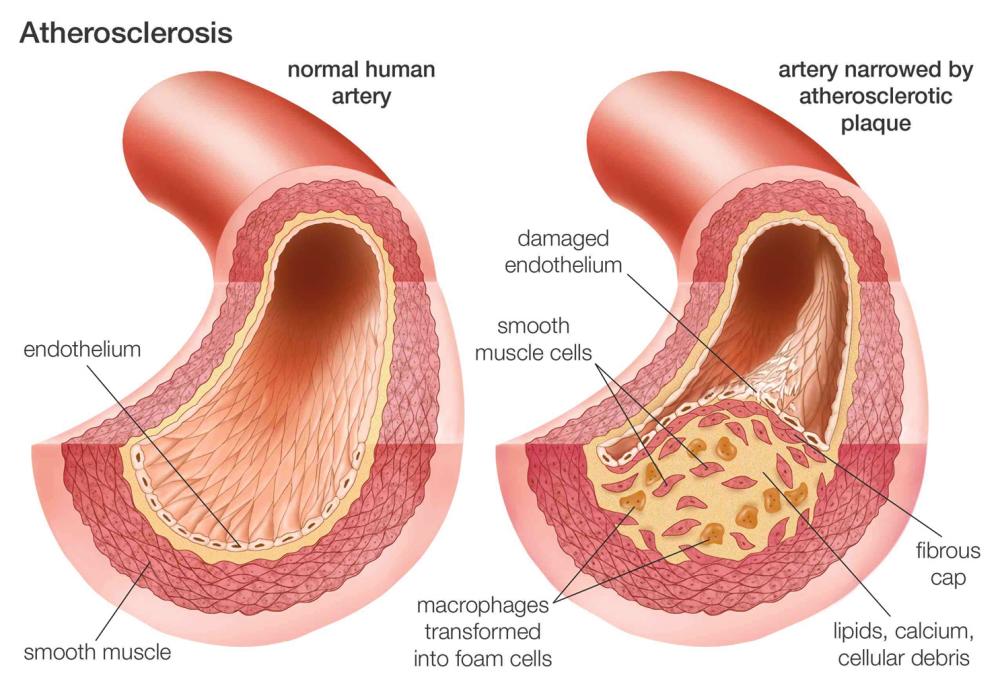In conjunction with World Heart Day 2021, it’s good to learn how to take care of your heart health and hopefully never experience any heart diseases.
The best thing you can do to get ahead of heart disease is to maintain a healthy lifestyle, and to recognise the different types of heart diseases and the symptoms to look out for.
Coronary artery disease (CAD)

A build-up of fatty plaque in your arteries, also known as atherosclerosis, is dangerous for the blood vessels and heart. The plaque build-up will cause the blood vessels to be blocked or narrowed which can lead to a heart attack, chest pain (angina) or stroke.
Unfortunately, you might only be diagnosed with coronary artery disease after you experienced a heart attack, angina, stroke or heart failure. Luckily, this situation can be prevented if the symptoms are caught early.
According to the Mayo Clinic, men experience symptoms in the form of chest pains. For women, their symptoms include chest discomfort, shortness of breath, nausea, and extreme fatigue.
Other symptoms of coronary artery disease include:
-> Chest tightness or chest pressure
-> Pain, numbness, weakness or coldness in arms and legs if blood vessels in those areas are narrowed
-> Pain in the neck, throat, jaw, upper abdomen or back
Heart arrhythmias (abnormal heartbeats)
Heart arrhythmias refer to a problem with the heart rhythm. The heart may be beating too quickly, too slowly or irregularly. The signs of heart arrhythmias are a fluttering or racing heart (tachycardia), slow heartbeat (bradycardia), chest pain or discomfort, shortness of breath, lightheadedness, dizziness, and fainting (syncope) or near fainting.
Congenital heart defects
Unlike other heart diseases, serious congenital heart defects are noticed soon after birth. The signs and symptoms in children include pale grey or blue skin colour (cyanosis), swelling in the legs, abdomen, or around the eyes. In infants, the symptoms appear as shortness of breath during feedings which can lead to poor weight gain.
Congenital heart defects that are less serious and not immediately life-threatening are often not diagnosed until later in childhood or during adulthood. The signs and symptoms include easily tiring or shortness of breath during exercise or activity, and swelling in the hands, ankles or feet.
Cardiomyopathy (diseased heart muscle)
If you have cardiomyopathy, your heart can’t pump blood to the rest of the body efficiently. Symptoms include as fatigue, shortness of breath or heart palpitations. Cardiomyopathy gets worse over time. As it worsens, the symptoms may include swelling of the legs, ankles and feet, irregular yet pounding heartbeats and dizzy spells.
Endocarditis (heart infection)
Endocarditis is an infection of the inner lining of the heart chambers and heart valves (endocardium). It’s most often caused by bacteria entering the blood and travelling to the heart. The symptoms can present as fever, chills, fatigue or weakness, shortness of breath, swelling in the legs or abdomen, and changes in heart rhythm. It can also include a dry or persistent cough, skin rashes or developing unusual spots.
* If you suspect you have cardiovascular issues, please consult a medical doctor.
What are the risk factors for heart disease?
Risk factors include smoking, physical inactivity, obesity, high blood pressure, and high cholesterol with low levels of good cholesterol known as HDL. People who have a high blood glucose level are also open to the risk of angina, heart attack, stroke and coronary artery disease.
However, there are other risk factors that you can’t control. This includes your family health history, ethnicity, sex and age.
The good news is that although these risk factors aren’t controllable, you still can monitor their effects and manage them.
This article was first published in theSun Buzz World Heart Day edition. Find out what you can do to prevent cardiovascular disease and what are the heart-healthy food to consume.









